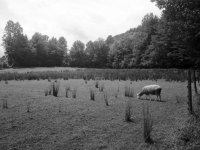Sat. Mo. Copper Mountain Mesa Breakfast

The sign is out; it’s the first Saturday of September and the light is beginning to change, there is a fall crispness that reminds me of going back to school on the east coast as a girl. Kip told us to come early to the Copper Mountain Mesa Community Breakfast because that is when the old timers come, the folks who have lived in this part of North Joshua Tree for 40 or 50 years, in homestead cabins, some built by their own hands, some by the hands of their parents. Community Centers exist all over the hight desert, in the various homestead communities, all with “thrift rooms” in the back, that are run by members of each community. These centers were started with the help of congressman Jerry Lewis, and tend to exist in parts of the desert far away from a traditional town center, but with a dense population.This morning everyone is talking about the new community garden that is going to go in next door, behind the old fire station. Violet, sitting across from me with a floral print 60s shirt, big glasses, and a husband Chris, who runs the “thrift room”, was lamenting that “nothing had happened yet, its not going to happen. I ain’t seen it.” Then the man who started the whole community garden thing walks in, long black beard, an earring, kind eyes; there is talk of fruit trees and movable raised beds, getting the kids involved, thinking about goats. Everyone has an opinion on the situation, everyone has a stake in this place.
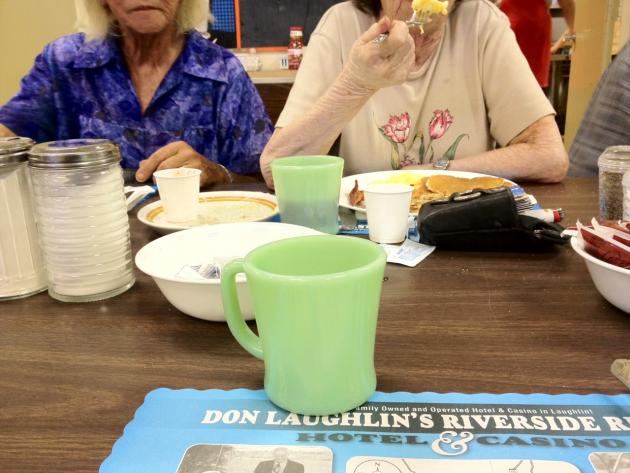
We all pile eggs, scrambled, over easy, sunny side up, into our mouths and talk about the love of this space (always the hottest topic of conversation.) Then Bruce sits down and shares his knowledge of Renaissance Fair culture; he used to work the ren fairs back in the midwest, working with handmade weaponry and armor, wearing handmade “wrap pants”. I meant to ask him about falconry and special falcon armour… He is scheming to create a desert Ren Fair. He tells us about his Viking and Native American anscestors, and takes his ponytail out to reveal his shiny, mid chest length, red curls. Bruce whittles wood, he can make the natural oils come out of any stick. He showed us his special walking stick, and explained how he coaxed the natural oils out of it, through a rubbing and steaming process.
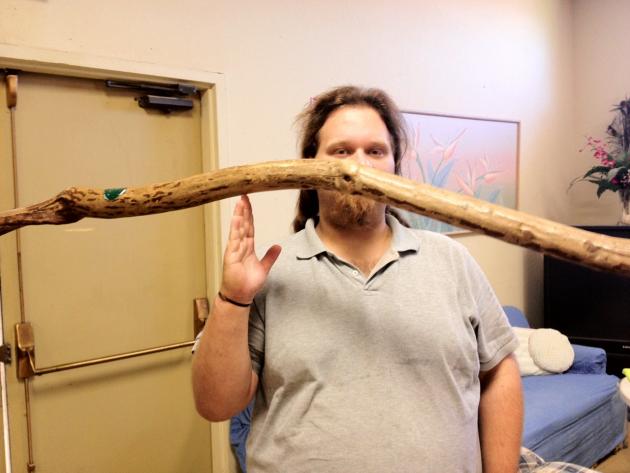
Bruce says that this hand crafted naturally oiled walking stick epitomizes his way in the world. He believes in a balanced life, in a people full of kindness.
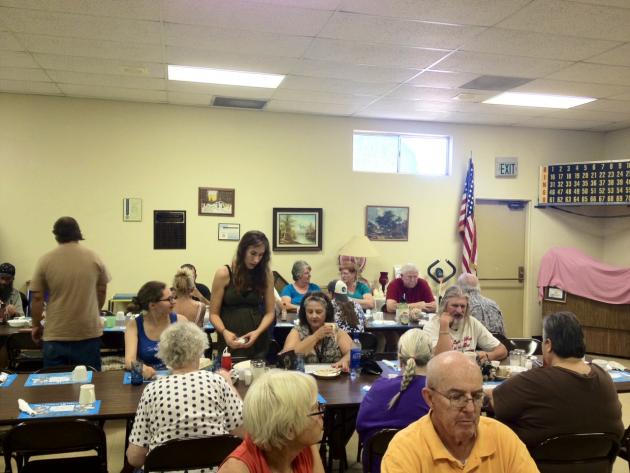
The community hall is packed on the first Saturday of the month. Breakfast is 4.50 for eggs hashbrowns, pancakes, orange juice, coffee, and biscuits and gravy. Copper Mountain Mesa Community Center is completely run through these breakfasts, and sales from the Thrift room. Kip bought a new dryer from the thrift room!
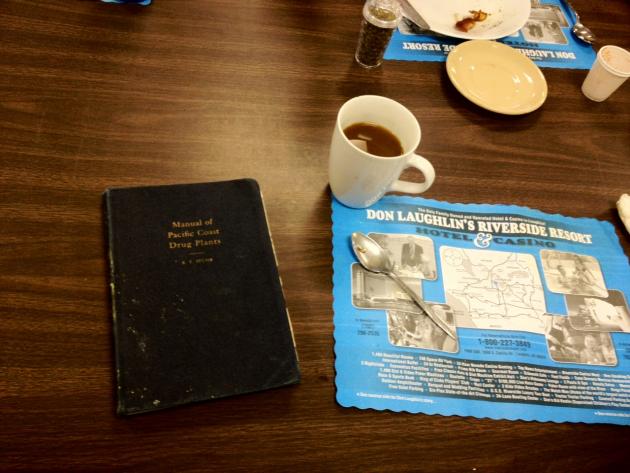
This book, Manual of Pacific Coast Drug Plants, is impossible to find these days, the information included within is too powerful, provides too much deep knowledge about our landscape here in California and the uses of its magical flora. Bruce found a copy of this book, from the 1929, with a map of which geomorphological regions yield which spiritual herbs. We talked about everything at breakfast, I really feel like we did.
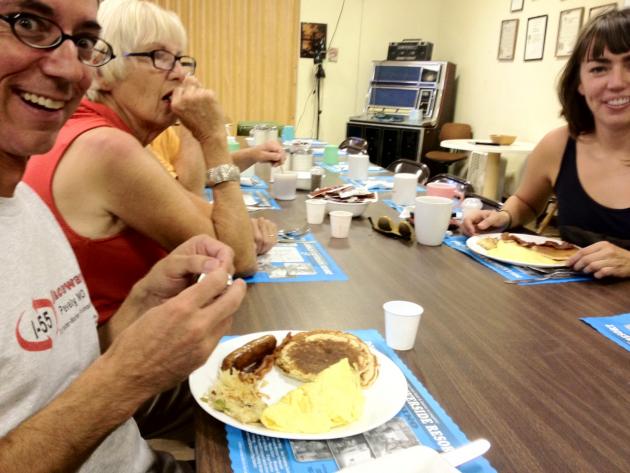
Katie Bachler was our first HDTS Scout, and was in residence from 2012-2013.
The HDTS Scout Residency is dedicated to learning more about the people and places that make up our diverse and ever evolving community.
During Katie’s residency, visitors were invited to drop into the HDTS HQ, the Scout’s home base, to meet Katie, who could be found making maps, hosting conversations, and baking bread – in between her off-site adventures around town and out in the field.
Katie had a lot in store during her time here, including:
- a series of talks featuring local experts
- joining together to create a web of knowledge
- a research library and archive documenting the many spaces, places, plants, and people that make up this special region
- casual conversations with drop in visitors over tea
- site visits and field trips around town
Katie engaged the community by instigating map-making and rag-rug braiding workshops, the Scout’s Book Club, Art in the Environment classes for desert kids, casual conversations, site visits and field trips—all shared in her Scout’s blog, which serves as the foundation for her book.





